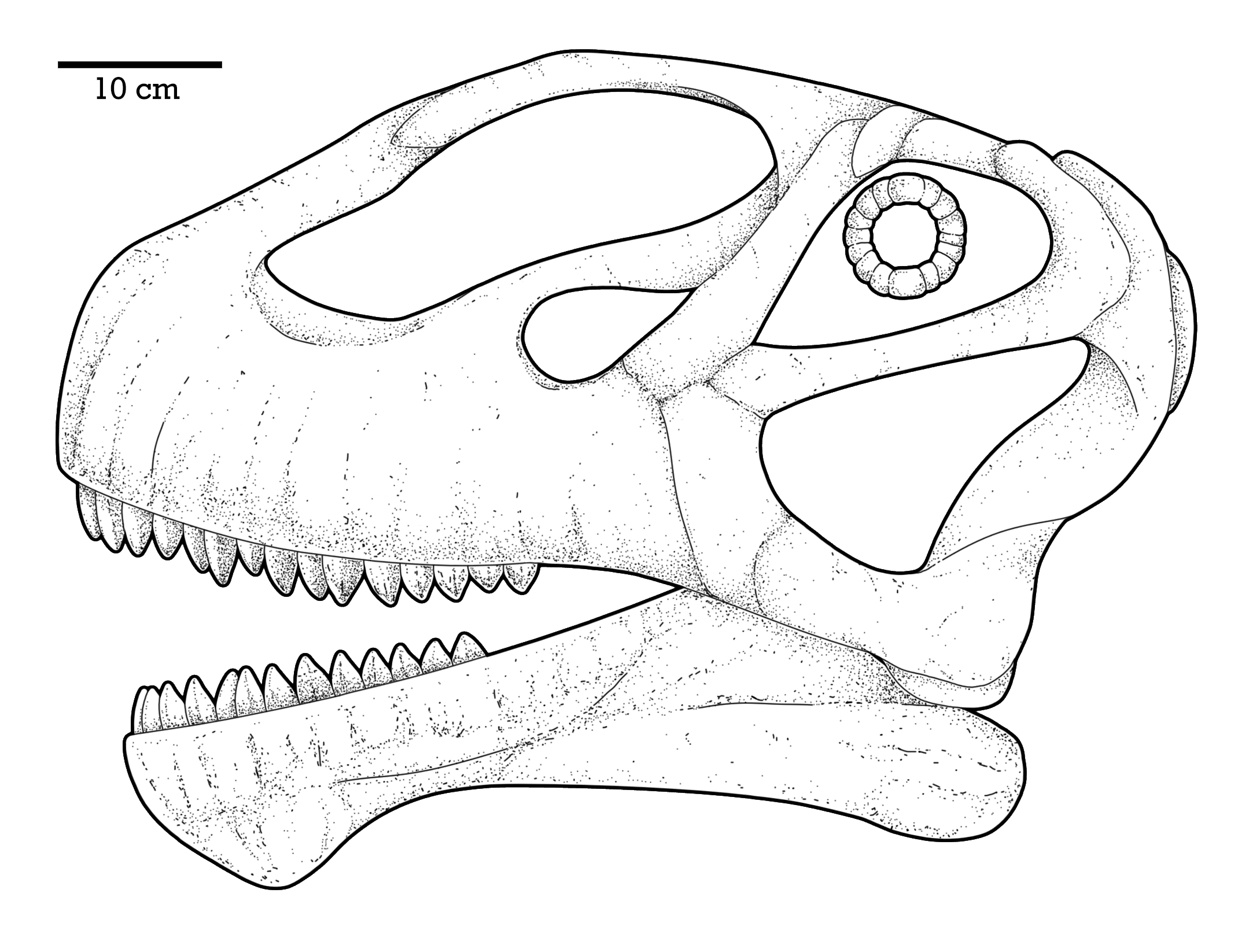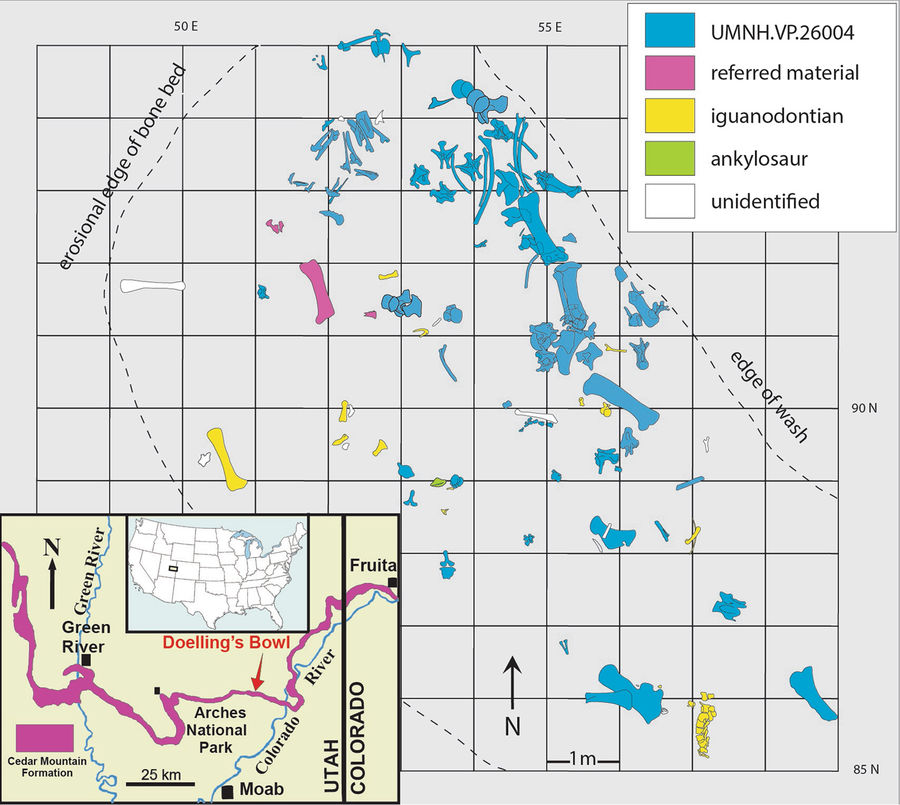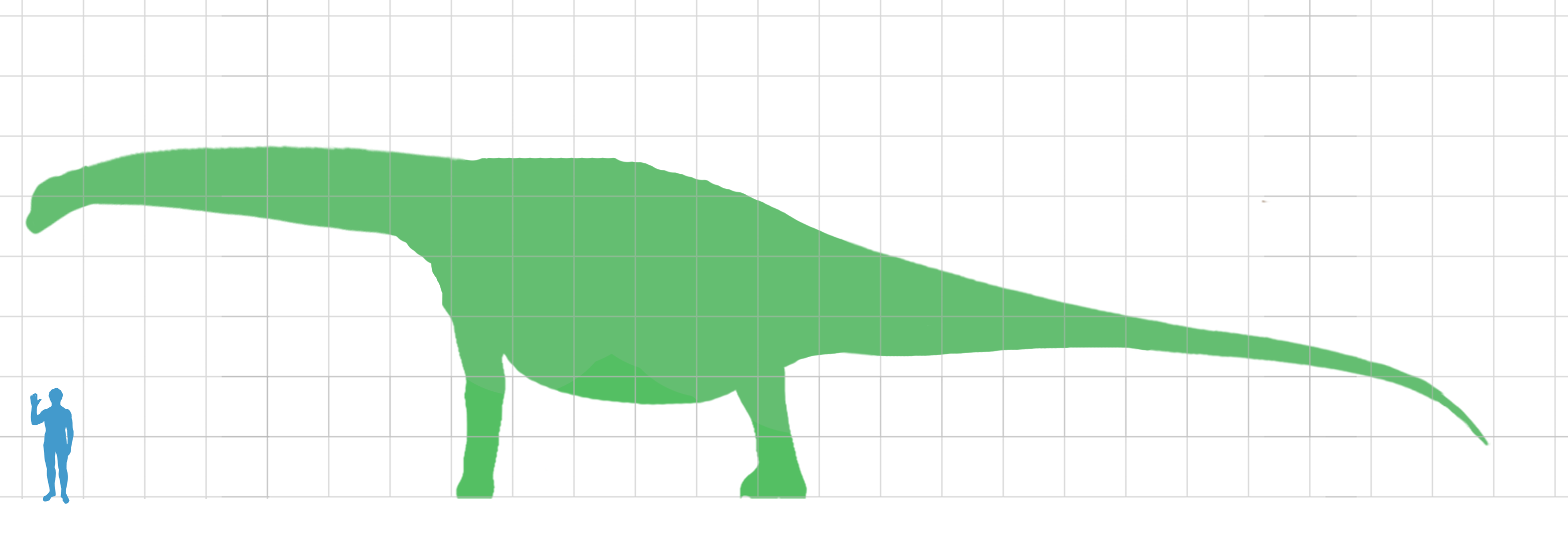|
Turiasauria
Turiasauria is an unranked clade of basal sauropod dinosaurs known from Middle Jurassic to Early Cretaceous deposits in Europe, North America, and Africa. Description Turiasauria was originally erected by Royo-Torres et al. (2006) to include ''Turiasaurus'', ''Galveosaurus'' and ''Losillasaurus'', all of which hail from the Villar del Arzobispo Formation (Tithonian-Berriasian) of Spain. Turiasuria was defined by the authors as "all Eusauropoda closer to ''Turiasaurus riodevensis'' than to ''Saltasaurus loricatus''". Cladistic analysis (Royo-Torres ''et al.'', 2006; 1927) of 309 characters and 33 taxa suggests that the turiasaurians lie outside the Neosauropoda and form a monophyletic group. The clade is diagnosed by the presence of vertical neural spines, posterior centroparapohyseal laminae on the dorsal vertebrae, the absence of pre- and postspinal laminae on the dorsal vertebrae, the absence of a scapular acromial crest, the presence of a prominent humeral deltopectoral crest, ... [...More Info...] [...Related Items...] OR: [Wikipedia] [Google] [Baidu] |
Mierasaurus
''Mierasaurus'' is an extinct genus of sauropod dinosaur from the Early Cretaceous of Utah, United States. The taxon was first described and named in 2017 by Rafael Royo-Torres and colleagues, from a mostly complete skeleton including a disarticulated partial skull and mandible, teeth, multiple vertebrae from along the length of the body, both scapulae, radius and ulna bones, a left manus, a complete pelvis, both femora and the entire left hindlimb. Additionally, they referred a lower jaw and femur from juvenile individuals, which were found nearby, to the genus. Collectively, ''Mierasaurus'' is among the most completely known North American sauropods. The genus name honours Bernardo de Miera y Pacheco, the first European scientist to enter what is now Utah. The type species for ''Mierasaurus'' is ''Mierasaurus bobyoungi'', named after Robert Glen Young, a paleontologist who researched the Early Cretaceous of Utah. Along with its closest relative ''Moabosaurus'', also from the ... [...More Info...] [...Related Items...] OR: [Wikipedia] [Google] [Baidu] |
Narindasaurus
''Narindasaurus'' (meaning "lizard of Narinda Bay") is a genus of turiasaurian sauropod dinosaur from the Middle Jurassic Isalo III Formation of Madagascar. The type species, ''N. thevenini'' was formally described by Royo-Torres ''et al.'' in 2020. The holotype, which consists of one specimen, is currently stored at the Muséum national d’Histoire naturelle and has been since 1906 or 1907. Discovery and naming The holotype was discovered in the Isalo III Formation before 1894 by Joseph Thomas Last, and were briefly noted on by Paul Lemoine in 1906.Lemoine P. 1906. Études géologiques dans le nord de Madagascar. In: Herman A, ed. Contributions à l’histoire géologique de l’Océan Indien. ''Paris: Librairie Scientifique'', 1–520. Armand Thevenin (1861-1942) was the first to diagnose ''Narindasaurus''. In 1907, he placed it within the now obsolete species "'' Bothriospondylus madagascariensis''", which is now known as ''Lapparentosaurus ''Lapparentosaurus'' is a g ... [...More Info...] [...Related Items...] OR: [Wikipedia] [Google] [Baidu] |
Eusauropoda
Eusauropoda (meaning "true sauropods") is a derived clade of sauropod dinosaurs. Eusauropods represent the node-based group that includes all descendant sauropods starting with the basal eusauropods of ''Shunosaurus'', and possibly ''Barapasaurus'', and ''Amygdalodon'', but excluding ''Vulcanodon'' and ''Rhoetosaurus''. The Eusauropoda was coined in 1995 by Paul Upchurch to create a monophyletic new taxonomic group that would include all sauropods, except for the vulcanodontids. Eusauropoda are herbivorous, quadrupedal, and have long necks. They have been found in South America, Europe, North America, Asia, Australia, and Africa. The temporal range of Eusauropoda ranges from the early Jurassic to the Latest Cretaceous periods. The most basal forms of eusauropods are not well known and because the cranial material for the ''Vulcanodon'' is not available, and the distribution of some of these shared derived traits that distinguish Eusauropoda is still completely clear. Descriptio ... [...More Info...] [...Related Items...] OR: [Wikipedia] [Google] [Baidu] |
Villar Del Arzobispo Formation
The Villar del Arzobispo Formation is a Late Jurassic to possibly Early Cretaceous geologic formation in eastern Spain. It is equivalent in age to the Lourinhã Formation of Portugal. It was originally thought to date from the Late Tithonian-Middle Berriasian, but more recent work suggests a Kimmeridigan-Late Tithonian, possibly dating to the Early Berriasian in some areas. The Villar del Arzobispo Formation's age in the area of Riodeva in Spain has been dated based on stratigraphic correlations as middle-upper Tithonian, approximately 145-141 million years old. In the area of Galve, the formation potentially dates into the earliest Cretaceous. Most of the unit consists of siliciclastic mudstone, however the lower portion of the formation is dominated by bioclastic, oolitic and peloidal limestone, while channelized sandstone and conglomerate is found in the middle portion of the unit. While the lower part of the formation was deposited in an inner carbonate platform, the upwar ... [...More Info...] [...Related Items...] OR: [Wikipedia] [Google] [Baidu] |
Losillasaurus
''Losillasaurus'' (meaning " Losilla lizard") is a genus of sauropod dinosaur from the Late Jurassic and possibly Early Cretaceous (Kimmeridgian-?Berriasian) in the southeast of Spain. The type species of the turiasaurian ''Losillasaurus giganteus'' was discovered in the Villar del Arzobispo Formation in Valencia and formally described by Casanovas, Santafé and Sanz in 2001. The holotype material is from a subadult and includes part of a skull; complete cervical, dorsal, sacral, and caudal vertebrae as well as several fragments; skeletal elements from the limbs including a humerus, ulna, radius, and metacarpal; sternal plates; and from the pelvis: the ilium, ischium, and pubis. The genus is characterized by the dimension and shape of the neural spine of the proximal caudal vertebrae. The humerus is long, which despite being from a subadult specimen is within 20% of the size of ''Paralititan ''Paralititan'' (meaning "tidal giant") was a giant titanosaurian sauropod dinosaur g ... [...More Info...] [...Related Items...] OR: [Wikipedia] [Google] [Baidu] |
Tendaguria
''Tendaguria'' ( ; meaning "the Tendaguru one") is a genus of herbivorous sauropod dinosaur from the Late Jurassic of Lindi Region, Tanzania. Discovery and naming In 1911, German geologist Wilhelm Bornhardt at Nambango in German East Africa discovered two sauropod vertebrae, fifteen kilometers (nine miles) southeast of Tendaguru Hill. These were described by Werner Janensch in 1929 but not named. The finds were formally named by José Fernando Bonaparte, Wolf-Dieter Heinrich and Rupert Wild in 2000. The type species is ''Tendaguria tanzaniensis'' () Bonaparte, Heinrich & Wild 2000. The generic name refers to the Tendaguru, the area of the great German palaeontological expeditions between 1909 and 1912. The specific name was "after Tanzania, the country where the holotype was collected".J.F. Bonaparte, W.-D. Heinrich, and R. Wild, 2000, "Review of ''Janenschia'' Wild, with the description of a new sauropod from the Tendaguru beds of Tanzania and a discussion on the systemati ... [...More Info...] [...Related Items...] OR: [Wikipedia] [Google] [Baidu] |
Dinosaur
Dinosaurs are a diverse group of reptiles of the clade Dinosauria. They first appeared during the Triassic period, between 243 and 233.23 million years ago (mya), although the exact origin and timing of the evolution of dinosaurs is the subject of active research. They became the dominant terrestrial vertebrates after the Triassic–Jurassic extinction event 201.3 mya; their dominance continued throughout the Jurassic and Cretaceous periods. The fossil record shows that birds are feathered dinosaurs, having evolved from earlier theropods during the Late Jurassic epoch, and are the only dinosaur lineage known to have survived the Cretaceous–Paleogene extinction event approximately 66 mya. Dinosaurs can therefore be divided into avian dinosaurs—birds—and the extinct non-avian dinosaurs, which are all dinosaurs other than birds. Dinosaurs are varied from taxonomic, morphological and ecological standpoints. Birds, at over 10,700 living species, are among ... [...More Info...] [...Related Items...] OR: [Wikipedia] [Google] [Baidu] |
Turiasaurus
''Turiasaurus'' (meaning " Turia lizard") is a genus of sauropod dinosaurs. It is known from a single fossil specimen representing the species ''Turiasaurus riodevensis'', found in the Kimmeridgian Villar del Arzobispo Formation of Teruel, Spain. Description ''Turiasaurus'' is believed to be the largest dinosaur ever found in Europe, and is among the largest dinosaurs known. It is estimated at in length and with a weight of .Royo-Torres, R., Cobos, A., and Alcalá, L. (2006). "A Giant European Dinosaur and a New Sauropod Clade." ''Science'' 314: 1925-1927.Paul, G.S., 2010, The Princeton Field Guide to Dinosaurs, Princeton University Press. The length of its skull is 70 centimetres, which is not too large. According to the paleontologist Luis Alcalá, this is because a larger head might have caused ''Turiasaurus'' to break its neck. Phylogenetic analysis shows that ''Turiasaurus'' lies outside of the Neosauropoda division and belongs to a new clade, Turiasauria, together wit ... [...More Info...] [...Related Items...] OR: [Wikipedia] [Google] [Baidu] |
Moabosaurus
''Moabosaurus'' (meaning "Moab reptile") is a genus of turiasaurian sauropod dinosaur from the Early Cretaceous Cedar Mountain Formation of Utah, United States. Description ''Moabosaurus'' is characterized by a suite of features including: extremely low neural spines that are thin, transverse ridges in the posterior cervical vertebrae and anterior dorsal vertebrae; strongly procoelous proximal and distal caudal vertebrae; and an ulna with well-developed lateral and medial anteroproximal ridges combined with a large olecranon process. According to the 2017 article which officially named and described ''Moabosaurus'', the animal was said to reach 10 meters (32.8 feet) long. However, the specimens which were examined belonged to juveniles and sub-adults, so it's possible that the creature measured longer when fully-grown. Discovery and naming ''Moabosaurus'' was collected from the Dalton Wells Quarry, which is about 20 km northwest of Moab, Utah. The quarry produced parts of ... [...More Info...] [...Related Items...] OR: [Wikipedia] [Google] [Baidu] |
Cardiodon
''Cardiodon'' (meaning "heart tooth", in reference to the shape) was a herbivorous genus of sauropod dinosaur, based on a tooth from the late Bathonian-age Middle Jurassic Forest Marble Formation of Wiltshire, England. Historically, it is very obscure and usually referred to ''Cetiosaurus'', but recent analyses suggest that it is a distinct genus, and possibly related to ''Turiasaurus''. ''Cardiodon'' was the first sauropod genus named.Taylor, Michael P., 2010, "Sauropod dinosaur research: a historical review", pp. 361-386 in: Richard T. J. Moody, Eric Buffetaut, Darren Naish and David M. Martill (eds.), ''Dinosaurs and Other Extinct Saurians: a Historical Perspective''. Geological Society of London, Special Publication 343 History and taxonomy Richard Owen named the genus for a now-lost tooth, part of the collection of naturalist Joseph Chaning Pearce, found near Bradford-on-Avon, but did not assign it a specific name at the time. The generic name is derived from Greek καρ� ... [...More Info...] [...Related Items...] OR: [Wikipedia] [Google] [Baidu] |
Neosodon
''Neosodon'' (meaning "new tooth") was a genus of sauropod dinosaur from the Late Tithonian-age Upper Jurassic Sables et Gres a Trigonia gibbosa of Départment du Pas-de-Calais, France. It has never been formally given a species name, but is often seen as ''N. praecursor'', which actually comes from a different animal. Often in the past, it had been assigned to the wastebasket taxon ''Pelorosaurus'', but restudy has suggested that it could be related to ''Turiasaurus'', a roughly-contemporaneous giant Spanish sauropod. It is only known from six teeth. History and taxonomy Moussaye named this genus for a large, broken, worn tooth found in Wilmille, near Boulogne-sur-Mer, and neglected to give it a species name. He thought that it belonged to a theropod like ''Megalosaurus''.Moussaye, M. de la. (1885). Sur une dent de ''Neosodon'', trouvée dans les sables ferruginaux de Wilmille. ''Bulletin, Société Géologique de France'' 3(13):51-53. rench/ref> Since then, five more teeth h ... [...More Info...] [...Related Items...] OR: [Wikipedia] [Google] [Baidu] |
Oplosaurus
''Oplosaurus'' (meaning "armed or weapon lizard" or "armoured lizard"; see below for discussion) was a genus of sauropod dinosaur from the Barremian-age Lower Cretaceous Wessex Formation of the Isle of Wight, England. It is known from a single tooth usually referred to the contemporaneous "wastebasket taxon" ''Pelorosaurus'', although there is no solid evidence for this. History and taxonomy In 1852 geologist Thomas Wright reported the find of a large reptilian tooth from the ''Wealden Clay'' near Brixton Bay on Wight. Wright had presented the find to several experts, among them Richard Owen, David Forbes, George Robert Waterhouse and Samuel Pickworth Woodward but only Gideon Mantell came with a useful suggestion pointing to a similarity with the teeth of the dinosaur ''Hylaeosaurus''. Not convinced by this, Wright concluded that the tooth, in view of its sharpness, belonged to a carnivorous reptile of unknown affinities.Wright, T. (1852). Contributions to the palaeontology of ... [...More Info...] [...Related Items...] OR: [Wikipedia] [Google] [Baidu] |






